Hola amigos,
My apologies in advance for such a lengthy response, but it is my last so I beg your indulgence, thank you in advance.
Lamar wrote
Dear group;
before one embarks upon a debate, one must FIRST research the VALIDITY of their position. This is critical to all aspects of a good debate and it's obvious that no one has bothered to research the history of the debate prior to engaging in said debate. For example, the Jesuits have been viewed as money-hungry slave owners yet how can this possibly be stated without first researching the HISTORY of the Jesuit Order in detail?
It is a bit silly to be wishing to go back to a starting point, at this stage of the discussions. Your description of the Jesuits as "money-hungry slave owners" is distorting what has been presented, into a caricature instead of the actual truth. This is not a criminal legal proceeding but a discussion amongst treasure hunters, which is more akin to a civil court, with very different standards of what constitutes evidence and what constitutes proof.
If the Jesuits were not involved in mining and never possessed any treasures, there must be no evidence they ever did. As you so openly dismiss and question the various Jesuit testimonies (as in the Georgetown documents, father Polzer's admittance, father Nentvig's statements, etc) it is apparent that you hold all Jesuit testimony as possibly false and open to questioning. To a degree, I share your view, for we cannot expect any group to openly admit to activities which were directly against the rules of their own Order, as well as the civil authorities in most cases.
Cactusjumper wrote
I believe I have been saying that all along......No evidence of Jesuit mining.
I wonder if you realize how that sounds, in spite of numerous pages of debate and bits of evidence. We could as readily state, with the same justifications, that there is no evidence there ever were any Jesuits in what is today Arizona.
Cactusjumper also wrote
When the Jesuits were expelled, history tells us, things went to hell in most of the places where they had control in Northern Mexico.
That is largely a matter of perspective, and at least in part not directly attributable to the Jesuit absence - are you taking the position that the Apaches must have feared the Jesuits, which is why when they were gone, the Apaches increased the tempo and ferocity of their assaults? Can we say that the Yuma Indians rose in rebellion against the Franciscans on the Colorado river, because the Jesuits were gone? Or is the case that the Spanish (and French, and Portuguese) had removed the Jesuits without realizing the amount of 'control' over the Amerindians they had benefited from the Jesuits, and their replacements (Franciscans, Dominicans, Augustinians etc) were both too few in number and often too harsh in their treatments of the native peoples?
Cactusjumper also wrote
Infosponge,
"If we are talking about Jesuit mining and treasure, could you please tell me why we shouldn't include South America? The same stories, rumors, legends,...."
For the same reason we don't include China. We are debating Jesuit mining in Mexico. If you want to talk about Jesuit mining in South America, start a topic. Those who are interested will seek it out.
This approach is myopic to say the least; for were the Jesuits of Sonora, Chihuahua, Sinloa, or Nueva Viscaya of a different Order than all the other Jesuits of the world? They were all of ONE Order, and the practices differed to some degree in Canada from Sonora or Peru & Baja, but it is silly to try to treat one branch of the tree as if it is far different from the rest. It appears that you might wish to restrict the discussion ONLY to the southwest, because you know that the records are spotty and incomplete, with much less documentation of Jesuit mining and/or treasures than in other regions, or that you realize that other areas have enough documentation to prove a criminal case against the Jesuits. The Jesuits of the Philippines answered to the very same General and Pope as the Jesuits of Martinique or the Jesuits of Sonora. Myths are most often based on facts, so why is it that almost anywhere there were Jesuits in the colonial period, we find legends of lost Jesuit mines and buried Jesuit treasures? All made up stories by treasure writers, or concocted by the enemies of the Order, or a catchy idea to attract the tourist trade? Really?
Cactusjumper also wrote
I often have the books that we discuss/quote here, and I notice you do as well. Just don't want you to think I am Googling the books and cutting and pasting the contents. I hate it when others do that. Di Peso's book is a little rare, and often expensive. Not everyone has a copy. At a guess, you and I may be the only two here.
May be, but quite a presumption. Have you been to the personal 'libraries' of everyone here, that you can make statements about what books anyone has, or doesn't have? I would not try to guess what books anyone else has, even those collections of people whom I have searched their personal libraries. I
don't own Di Peso's book, and having had to live on tight budgets for a number of years the 'book purchase' fund has always been very restricted; however many rare books I have had to borrow by interlibrary loans or even drive considerable distances to go to large libraries in order to have a peek at them. Being a simple treasure hunter and not a professional academic, I did not take the step of making photocopies of everything I ever read, for my own purposes (treasure hunting) it was sufficient to just take notes of the salient points.
I have very often taken advantage of the quite good and growing Google online collection of books, and cut-n-paste the relevant passages in order to support the contentions made; at the time I was laboring under the (clearly mistaken) notion that by doing so, it served several purposes, first it was not my own words or thoughts, but published statements of recognized 'authoritive' figures in most cases; second that anyone could simply click on the links provided, and thus see for themselves that I had not altered, re-worded or changed the meanings of the statements thus quoted. It was a quick and dirty (
easy for a lazy person with very limited time to spend on the internet) method of providing a 'case'. Now that I understand how much this is hated, I will not bother you Joe with any further debates. I am sorry if I do not have time (or even access to much of our own small collection of books) to be hand-typing each word and then adding the notations for where to check on it, and for having caused you such irritation with my google-cut-n-paste jobs.
Very nice pix Joe, especially that bird (a grackle?) was it really a wild bird that just happened to come in for a treat? Pretty neat that it did, and especially that you were able to get a photo of it.
It is still daylight here and there is still a chore or three that must get done so I will sign out in a moment, just had a few minutes and wanted to catch up. Pretty impressive collection you have there amigo Infosponge, I am jealous!
Good luck and good hunting amigos, I hope you find the treasures that you seek.

Oroblanco
PS Edited this, on second thought, I won't bow out of such an interesting discussion. My apologies for acting childish.

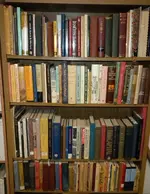








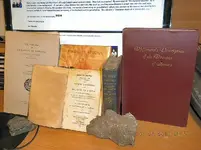


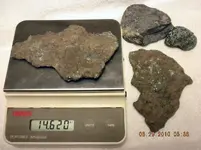
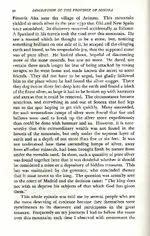
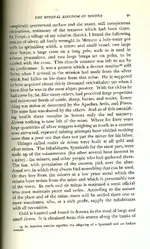
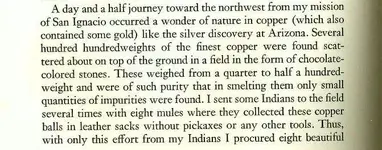

 <I am being facetious amigos>
<I am being facetious amigos> 
